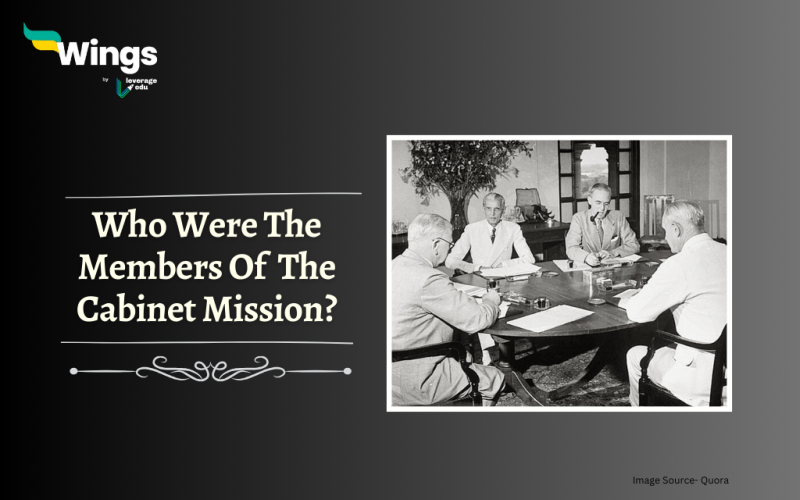In 1946, the British government sent a delegation known as the Cabinet Mission to India, intending to find a solution to the political deadlock between the Indian National Congress and the Muslim League. The Cabinet Mission members were tasked with figuring out India’s political problems and easing the transfer of power from the British Raj to Indian hands. Let’s take a closer look at the Cabinet Mission members and their contributions to this historic process.

Who Were the Cabinet Mission Members?
The Cabinet Mission members are –
- Lord Pethick-Lawrence: Lord Pethick-Lawrence, also known as the First Baron Pethick-Lawrence, was a British politician. He was from the Labour Party and served as the Secretary of State for India during the time of the Cabinet Mission. He played a key role in formulating the proposals for the transfer of power and was responsible for a smooth transition to independence.
- Sir Stafford Cripps: Sir Stafford Cripps was a British politician from the Labour Party. He was part of the Cabinet Mission to India and the President of the Board of Trade. Cripps was famous for his advocacy of socialist principles and had experience as a member of the War Cabinet during World War II.
- A.V. Alexander: A.V. Alexander, also known as 1st Earl Alexander of Hillsborough, was a British politician and trade unionist. He was also a member of the Labour Party. He served as the First Lord of the Admiralty and was a key figure in the Cabinet Mission to India. His understanding of the economic aspects of the proposed solutions and his ability to navigate the complexities of British-Indian relations were taken into account for the success of the mission.
Also Read – Who was the First Woman Cabinet Minister of India?
The Role of the Cabinet Mission Members
The members of the Cabinet Mission were tasked with devising a plan that would lead to the transfer of power from British colonial rule to Indian hands. Their primary objectives included:
- Finding a viable constitutional solution that would accommodate the interests of both the Congress and the Muslim League.
- They engaged in discussions with Indian leaders, including Mahatma Gandhi, Jawaharlal Nehru and Muhammad Ali Jinnah, to understand their perspectives and concerns.
- They worked towards finding a solution to the communal tensions and division between Hindus and Muslims, which eventually led to the partition of India and the creation of Pakistan.
Relevant Blogs
This blog was all about the Cabinet Mission members. If you want to read more articles like this, you can get Short notes on the Modern History of India here. Also, you can visit our general knowledge page on Indian History!
 One app for all your study abroad needs
One app for all your study abroad needs













